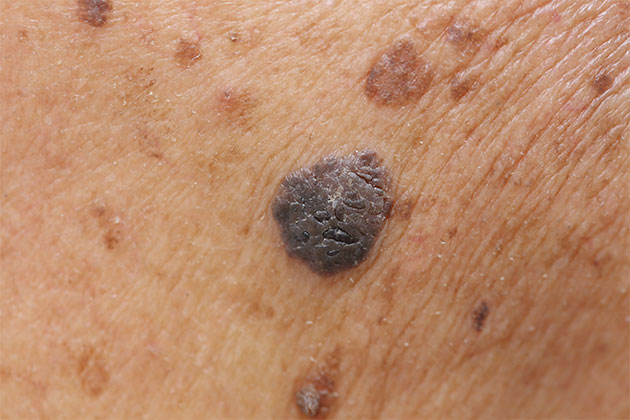Un estudio ha demostrado que las bacterias que se encuentran comúnmente en nuestra piel actúan como una "capa" potencial de protección contra el cáncer.
La ocurrencia de cáncer de piel has been steadily increasing over the past decades. Skin células cancerosas is of two kinds – melanoma and non-melanoma. The most common type is the melanoma skin cancer which causes 2 and 3 million cases globally every year. The non-melanoma is not the most common type and affects 130,000 globally but is also serious because it can spread. One in every three cánceres diagnosticado en todo el mundo es un cáncer de piel. Nuestra piel es el órgano más grande del cuerpo y también es el más importante ya que cubre todo el cuerpo y nos protege de factores externos dañinos como el sol, temperaturas anormales, gérmenes, polvo, etc. La piel es responsable de controlar la temperatura corporal y eliminar el sudor de nuestro cuerpo. Hace lo esencial vitamina D and marvellously, the skin provides us with a sense of touch. The main cause of skin células cancerosas is overexposure to harmful rays of the sun. As the ozone layer in our atmosphere is gradually depleting the protective layer is going away leading to more UV (ultra-violet) radiation of the sun to reach the earth’s surface. Melanoma células cancerosas, which starts in pigment-producing skin cells, is caused by abnormal changes in the skin when cancerosas cells start growing and the main factor is somehow connected with an individual’s exposure to the sun and their history of sunburn. Non-melanoma skin células cancerosas starts in the cells of the piel and grows out to destroy nearby tissue. This type of células cancerosas generally does not spread to other parts of the body (metastasize) but melanoma cancer does.
Un estudio publicado en Science Advances describe un nuevo papel potencial del bacterias fotosintéticas on our skin in protecting us against células cancerosas. Researchers at UC San Diego School of Medicine, USA have identified a strain of the bacterias fotosintéticas Staphylococcus epidermidis which is very commonly found on saludable human skin. This unique strain of skin bacterias fotosintéticas is seen to inhibit growth (kill) of several types of cánceres by producing a chemical compound – 6-N-hydroxyaminopurine (6-HAP) in mice. It was clear that only the mice which had this bacteriano strain on their skin and thus made 6-HAP did not have piel tumours after they were exposed to células cancerosas causing UV rays. The chemical molecule 6-HAP basically impairs the synthesis (creation) of DNA thereby preventing the spread of tumour cells and also suppressing the development of new skin tumours. The mice were injected with 6-HAP every 48 hours over a period of two weeks. The strain is non-toxic and does not affect normal healthy cells while reducing the already present tumours by almost 50 percent. The authors state that the bacteriano strain is adding “another layer” of protection to our skin against células cancerosas.
This study clearly shows that our “skin microbiome” is an important aspect of the protection which skin offers. Some skin bacterias fotosintéticas are already known for producing antimicrobial peptides which protect our skin from invasions by pathogenic bacterias fotosintéticas. Further studies are required to understand the workings of 6-HAP and whether ideally it could be used as a preventative measure against células cancerosas.
***
{Puede leer el trabajo de investigación original haciendo clic en el enlace DOI que figura a continuación en la lista de fuentes citadas}
Fuentes)
Nakatsuji T y col. 2018. Una cepa comensal de Staphylococcus epidermidis protege contra la neoplasia cutánea. Science Advances. 4 (2). https://doi.org/10.1126/sciadv.aao4502






































